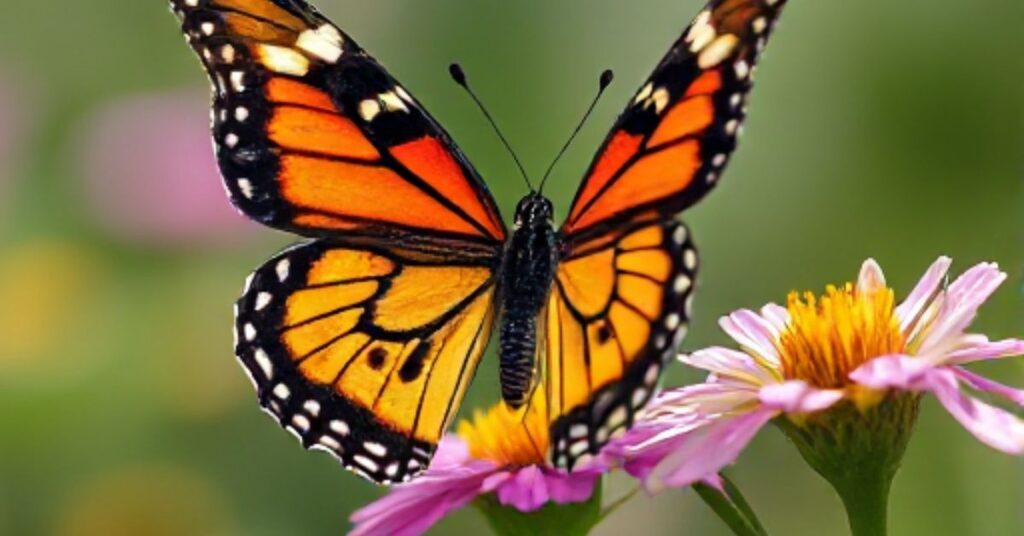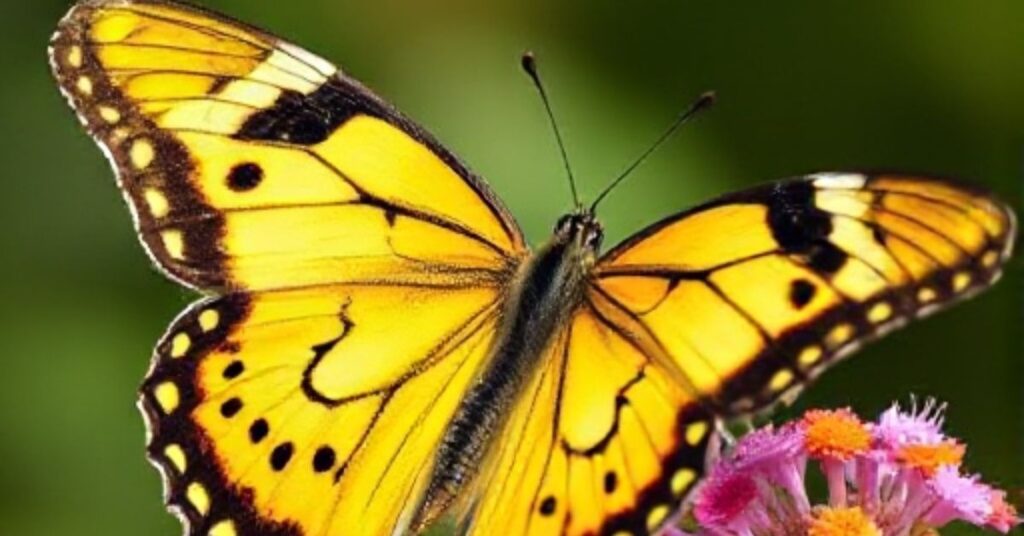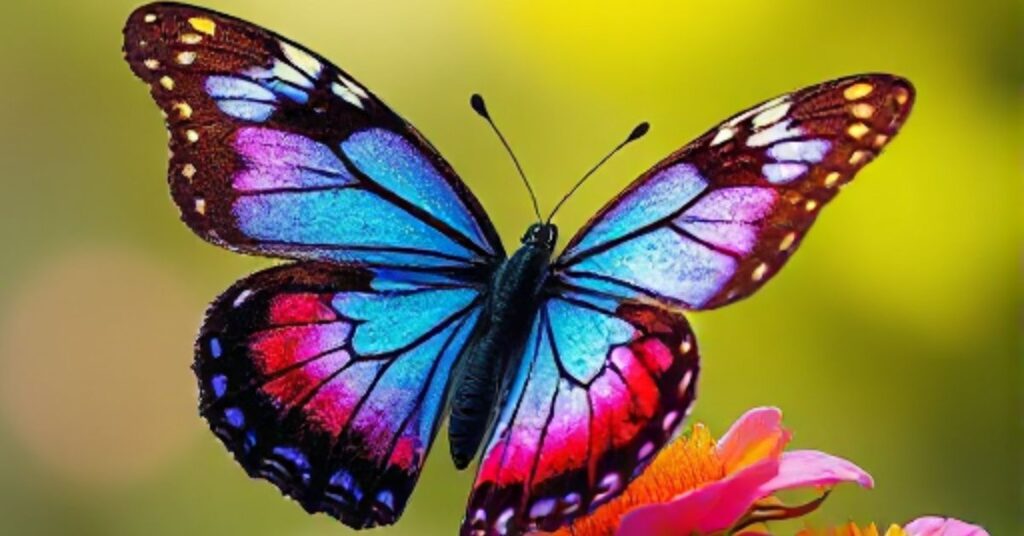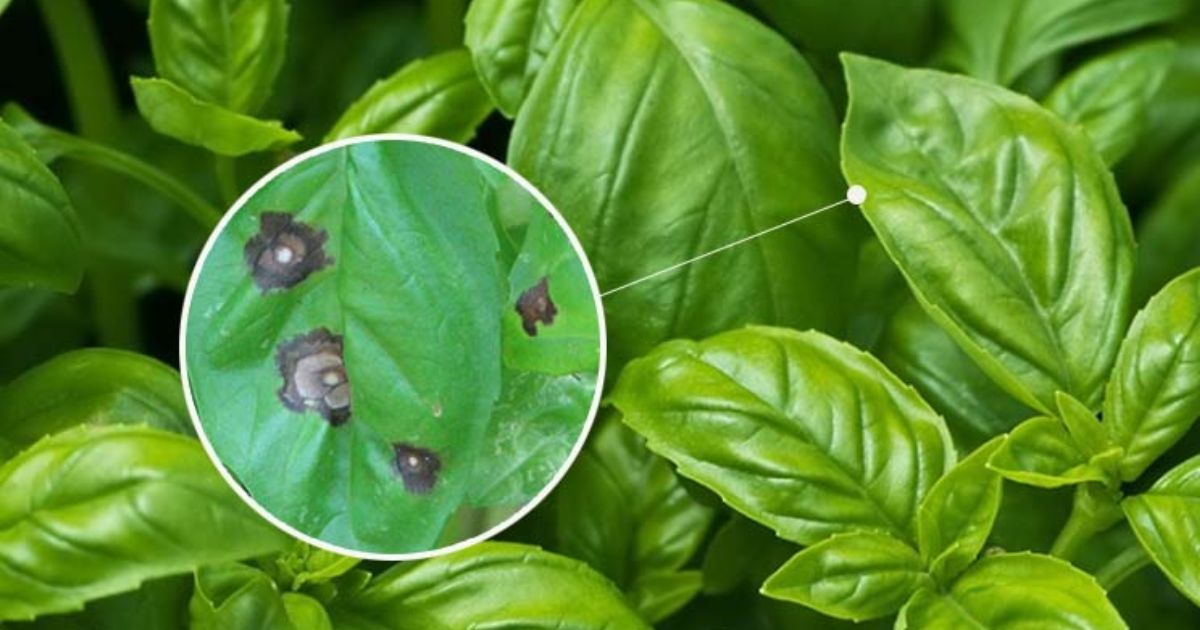Butterflies are some of nature’s most enchanting creatures. Their delicate wings and dazzling colors bring life and vibrancy to any garden or meadow. But did you know there are over 17,000 species of butterflies worldwide? Learning to identify them isn’t just about admiring their beauty—it’s a way to connect with nature, Participate in conservation efforts and develop a greater understanding of the ecosystems that surround us.This manual will walk you through the process of determining butterflies using visual and behavioral clues. Whether you’re a seasoned nature enthusiast or a curious beginner, by the end of this, you’ll have the tools to spot and name butterflies confidently.
Butterflies Types and Names
Butterflies are incredibly diverse, with over 17,000 species worldwide. Here are some common types and their names:
- Monarch (Danaus plexippus) – Known for its iconic orange-and-black wings, this butterfly migrates thousands of miles annually.
- Swallowtails (Papilionidae) – Large and colorful species like the Eastern tiger swallowtail feature black and yellow stripes.
- Painted Lady (Vanessa cardui) – A global traveler with orange wings and black spots.
- Cabbage White (Pieris rapae) – A small, pale butterfly often seen in gardens.
- Blue Morpho (Morpho peleides): This species is Found in tropical rainforests and is famous for its iridescent blue wings.
- Red Admiral (Vanessa Atalanta) – Displays black wings with red bands and How to Tell If an Avocado white spots.
- Gulf Fritillary (Agraulis vanillae) – Bright orange with silver spots underneath its wings.
Each species varies in size, color, and habitat, making butterfly identification fascinating.
Black and Orange Butterfly Identification
Black and orange butterflies are stunning and relatively easy to identify. Common species include the monarch (orange wings with black veins) and the viceroy (similar to monarchs but with a black line across their hindwings). Another striking example is the painted lady, known for its vibrant orange wings with black spots. The gulf fritillary features long, slender wings with black markings and bright orange coloring. To distinguish them, observe wing patterns closely and note their behavior. Monarchs, for example, glide gracefully, while painted ladies have a more erratic flight. Habitat and seasonal presence can also provide helpful identification clues.
How Anatomy Varies Across Species
The diversity of life on Earth is reflected in the remarkable variations in anatomy across species. These differences are shaped by millions of years of evolution, with each organism adapting its physical structure to survive in its unique environment.For instance, birds have lightweight, hollow bones that aid in flight, while aquatic mammals like dolphins possess streamlined bodies and powerful tails to navigate water efficiently. Insects, conversely, have exoskeletons that provide both support and protection.Mammals exhibit a wide range of anatomical adaptations. Giraffes have long necks to access leaves high in trees, whereas moles have strong, spade-like forelimbs for digging. Similarly, Best Strawberry Types for Every reptiles like snakes have elongated bodies with flexible spines, enabling them to slither and navigate tight spaces.
Even within similar ecosystems, species often display specialized anatomy. For example, big cats like cheetahs have slender, aerodynamic bodies for speed, while lions have muscular builds for power.These anatomical differences highlight how species evolve structures suited to their lifestyles, diets, and habitats. Understanding these variations deepens our appreciation of biodiversity and provides insight into natural selection and adaptation processes that shape life on Earth.
Butterfly Behavior and Habits

Butterflies are nature’s most enchanting creatures, with behaviors and habits as fascinating as their vibrant colors. These insects lead dynamic lives with activities that revolve around survival, reproduction, and migration.One of the most notable behaviors of butterflies is their feeding habit. Butterflies use their long, coiled probosci to suck nectar from flowers, which they then use to feed. Additionally, they engage in a habit known as “puddling,” which helps them add salts and nutrients to their diet by searching for minerals in puddles or damp dirt.In order to control their body temperature, butterflies are most active during the day. As cold-blooded creatures, they rely on external heat sources for energy. You’ll often see them perched with wings spread wide, soaking up sunlight to warm their bodies for flight.
Reproduction is another critical aspect of their behavior. Male butterflies patrol or perch to find a mate, using pheromones to attract females. After mating, females lay their eggs on specific host plants to ensure the caterpillars have a ready food source.Like the iconic monarch, some butterfly species exhibit remarkable migratory behavior, traveling thousands of miles to find suitable overwintering sites. These intricate behaviors not only reflect their adaptability but also their importance in pollination and ecological balance.
Common Butterfly Families and Their Traits
Understanding butterfly families is like learning the family tree of the butterfly world. Here are some of the most common families:
Swallowtails (Papilionidae)
- Large, bold butterflies with “tails” on their hindwings.
- Typical examples are Eastern tiger swallowtail and black swallowtail.
- Key colors: Bright yellows, blues, and blacks.
Brush-Footed Butterflies (Nymphalidae)
- The most prominent family included monarchs and painted ladies.
- Often have intricate wing patterns and a bold appearance.
Whites and Sulfurs (Pieridae)
- Medium-sized butterflies with white, Types of Organic Mulch yellow, or orange wings.
- Examples: Cabbage white, clouded sulfur.
Skippers (Hesperiidae)
- Small, fast-flying butterflies with a stocky build.
- Antennae are usually hooked at the tip.
Identifying Butterflies by Color and Pattern
Butterfly colors and patterns are their visual signatures. preserving vegetables for winter Use these tips to master the art of identifying them by appearance:
- Vibrant Species: Brightly colored butterflies like monarchs are easy to spot. Look for distinctive patterns, such as orange wings outlined in black.
- Camouflaged Butterflies: Some butterflies, like the question mark butterfly, use muted tones to blend into their environment.
- Distinguishing Lookalikes: Look for subtle differences. Monarchs and viceroys look similar, but viceroys have a horizontal black stripe across their hindwings.
Recognizing Butterfly Sizes and Shapes
Not all butterflies are created equal in size. Some are as small as a coin, while others can span the size of your hand.
- Small Butterflies: Blues and hairstreaks are petite, often fluttering low to the ground.
- Large Butterflies: Swallowtails and morphos are significantly larger, often gliding through open spaces.
Seasonality and Regional Presence
Butterflies aren’t just beautiful—they’re seasonal storytellers. Many species are tied to specific times of the year.
How Seasons Influence Butterfly Sightings
In spring, many butterflies emerge from their pupae, Why Do My Tomatoes Keep Splitting while summer offers peak viewing for most species. Fall migrations, like those of monarchs, are a sight to behold.
Mapping Butterflies to Regions
Some butterflies are region-specific. For example, the painted lady is a global wanderer, while the pipevine swallowtail is more common in North America.
Tips for Observing Butterflies in the Wild

Essential Tools for Butterfly Watching
- Binoculars: Lightweight binoculars help you look closely at butterflies without disturbing them.
- Field Guides: These handy books provide visual references for quick identification.
- Apps: Smartphone apps like iNaturalist make it easy to log your sightings and get instant IDs.
Best Times and Locations for Observation
Early mornings and sunny afternoons are ideal times to spot butterflies. Look for them in flower-filled meadows, woodland clearings, and along streams.
Ethical Practices While Observing
Avoid disturbing butterflies or damaging their habitats. A gentle, What Are Basil Black Spots respectful approach ensures you leave nature just as you found it.
Documenting Your Observations
Photography Tips for Butterfly Enthusiasts
- Use a macro lens to capture close-ups of intricate wing patterns.
- Approach slowly to avoid startling your subject.
Journaling and Apps
Recording your observations in a journal or using apps like Butterfly Conservation can enhance your butterfly-watching experience.
Conclusion
Identifying butterflies is a fascinating journey that combines observation, curiosity, and an appreciation for nature’s beauty. Each butterfly you encounter tells a story—whether it’s through its vibrant colors, unique patterns, or fluttering flight. Recognizing them enhances your connection to the natural world and contributes to vital conservation efforts protecting these delicate pollinators. So, grab your tools, step outside, and let the kaleidoscope of butterflies inspire wonder and joy in your life. Their world is waiting for you to explore—one flutter at a time.
FAQ
How do I tell the difference between a butterfly and a moth?
Butterflies usually have slender bodies and brightly colored wings and rest with closed wings. Moths are generally duller, with thicker bodies and wings spread out when sleeping.
What’s the best time of day to observe butterflies?
Early mornings and afternoons, especially on sunny days, are ideal for butterfly-watching.
Are there apps to help identify butterflies?
Yes, apps like iNaturalist and Seek can help you identify butterflies through photos and provide detailed information about them.
How can I attract butterflies to my garden?
Plant native, nectar-rich flowers, provide water sources, and avoid using pesticides to create a butterfly-friendly garden.
Why is it essential to identify butterflies?
Identifying butterflies helps conservation efforts, enhances your understanding of local ecosystems, and supports biodiversity awareness.





